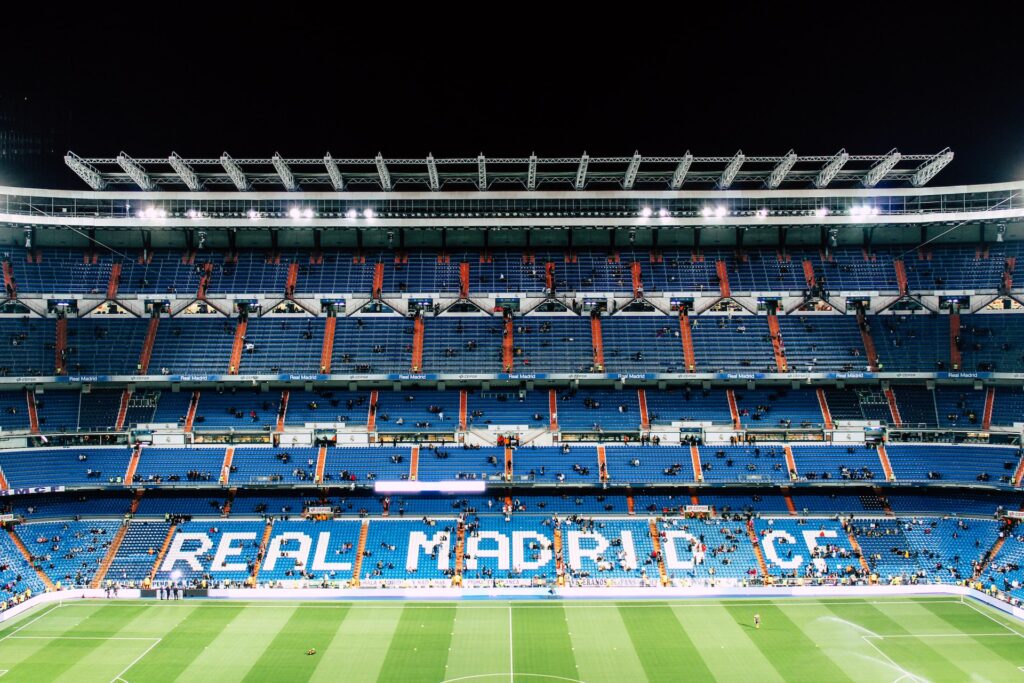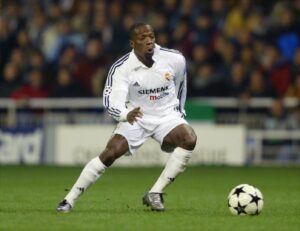Players intuitively grasping their roles within a team is a manager’s dream; it’s what all the hard hours on the training ground are working towards, making the job of implementing their strategy so much easier. When somebody reliably churns out at least 8/10 performances weekly, you can focus your tactical tweaks elsewhere.
A luxury that isn’t afforded to all coaches is a member of their team producing such commanding displays that their name becomes etched into the soccer lexicon, synonymous with a role in a side.
Simply put, Claude Makélélé perfected the role of a defensive midfielder. There were very few who could conduct the role quite like him beforehand, and many who have tried to replicate his role since.
Finding his feet
Fans fondly remember this transformational figure who redefined the position, but Makélélé wasn’t exclusively used in defensive midfield. Claude explained how he was experimented with during his time at Nantes in a more attacking midfield role.
Young players, even ones who go on to become great, tend to explore positional possibilities for them with willing attitudes aimed at impressing coaches. Makélélé was happy to oblige.
The genesis of Makélélé as a defensive midfielder was in France, at Nantes plus a brief spell in Marseille, yet glimpses of the player we would soon marvel at on English shores started to crop up in Galicia. Tucked away in Spain’s northwestern corner, Celta Vigo unearthed the frightening potential that Claude Makélélé possessed to cement the position that suited him best.
Makélélé wasn’t too proud to draw on the experience of his teammates. Nuggets of wisdom from Mazinho, his Brazilian midfield partner at the time, are accredited with Claude’s successful permanent shift to the anchorman. It gave him the confidence to develop his positional awareness and to understand what marshalling a high-performing midfield entails.
Serial winner

With just the 1994/95 French league title to his name, Makélélé would’ve been forgiven for assuming his career wouldn’t be trophy-laden, but once Real Madrid signs you, it’s inevitable that you’re going to add to your medal collection.
Los Blancos won two league titles in the spell that Claude Makélélé spent in Madrid, proving to be an integral part of their success. Even with all the glitz and glamour associated with the Galácticos, a metronomic heartbeat was required to retain flow throughout the side; Makélélé was exactly that.
His crowning club achievement was lifting the European Cup in 2002, playing a pivotal role in Real Madrid getting their hands on that famous Champions League trophy once more.
After three successful seasons with Real Madrid, Makélélé approached club president Florentino Pérez to renegotiate his contract. It’d be reasonable to assume that executives at an all-conquering outfit like Real Madrid would listen to its star names when they stress the importance of a specific cog in their relentless machine. Even those at the highest levels of the game get things wrong from time to time.
Pérez outright refused to increase Makélélé’s salary, clearly not recognizing his value to what the club had accomplished. Pérez even went as far as to suggest that Makélélé was easily replaceable. Therefore, he was sold to Chelsea, and how fortunate the Blues must’ve felt to have landed him.
The Frenchman won five major trophies during his spell in the English capital, including two league titles. It was here, of course, that Makélélé mastered the role he is renowned for in a system that was revolutionary.
As efficient with the ball as they come and as devastating to the opposition as you could hope for; operating as a more attacking midfielder in a team containing Makélélé must’ve been a utopia, with the license and freedom to roam in that No.10 slot at their leisure.
Yet his final game in a Chelsea shirt was to end in heartbreak. Makélélé and Co’s scintillating run to the 2008 Champions League final gave hope to an ownership regime starved of European success in their early tenure, but it wasn’t to be.
Were it not for the regrettable actions of teammate Zinedine Zidane on a 2006 Berlin evening, Makélélé may well have become a World Cup winner too. Claude did all he could, leaving everything out there on the pitch every time he pulled on a France jersey.
Tactical advantages
The 4-4-2 in a diamond formation was a popular shape throughout the 90s and 00s, as managers felt it provided the best amount of balance for a side to defend and attack proficiently. Of course, the game and its tactics evolve, and tacticians search for contemporary routes to goal, using every weapon in their arsenal to penetrate determined defenses.
Just as importantly, part of that evolution is exploring new ways to stifle the opposition. That’s where Makélélé comes in.
Signing Makélélé offered Chelsea the flexibility for his manager to alter their formations. Back then, in the Premier League, 4-4-2 felt like the default setup for nearly all managers. However, José Mourinho tore up that instruction manual after arriving from Portugal, astutely aware that employing the archetypal English structure could see his side becoming exposed in central areas.

For this reason, Mourinho implemented his own 4-3-3 formation with one of the midfielders staying deep throughout, a fairly uncommon tactic in English soccer those days. With the extra central midfielder, Mourinho knew that his side could control the game by overwhelming the opposition in the middle of the field, and Makélélé was just the man you needed to hassle the opponents at every turn.
Mourinho didn’t invent the 4-3-3 formation, not by a long shot, but that approach hadn’t been successfully adopted in the Premier League with such effect and success until José landed in London. The former Porto manager was savvy enough to realize that Makélélé could operate in that deep midfield role to a tee.
An effective linchpin such as Makélélé can open up the attacking avenues out wide as well. Should the ball make its way from the center backs to Makélélé, a player of his quality has the agility and spacial awareness to hold the ball up or turn away from danger while his full-backs bomb forward into attacking positions, thus transitioning the move from defense to midfield to attack through a series of shorter and lower risk exchanges, rather than defenders attempting ambitious punts goalward with a much lower likelihood of working.
This contribution to the attack is neither a tenuous one nor a negligible one. Those who dismiss Makélélé and his successors as skilfully inept and unimaginative, lacking the creativity possessed by their teammates, ignore the importance that the Makélélé role offers.
How would a team build its charges forward without a foundation of rigid security shifting the ball from deep? Four or five attack-focused midfielders known principally for their creativity would offer little substance and oft-required orchestrating.
More than a trendsetter
If Beckenbauer was the epitome of the defensive sweeper in his day, Makélélé was the midfield version. He was the midfield’s insurance policy. Should you penetrate the first line of midfield, you’d still have work on your hands to reach the defensive line, and more often than not, Makélélé made sure that threat was neutralized.
Certain plaudits go further than suggesting that Makélélé reinvented his position by claiming that he changed English soccer.
Is this a reasonable statement? Is it coincidental that Real Madrid stumbled in the Champions League knockout stages for years immediately after his departure? Was it a coincidence that Chelsea’s first league title of the modern era came after Makélélé’s arrival? I’ll let you decide that.
Let’s not forget Claude’s direct replacement when he left Chelsea: John Obi Mikel. Makélélé laid out the blueprint for Mikel, who heeded his guidance. Much like his predecessor, Mikel rarely ventured into opposition territory, instead instructed to swamp the zone between midfield and defense. This is the impression Makélélé left on the Premier League.
Claude Makalele is a self-described analyser of the game, sacrificing personal glory by assessing potential threats and then passing the limelight to his teammates. Not one for seeking acclaim, Makélélé quietly went about his duties with the measure of a man who could see the bigger picture, understanding what his team was fighting for and what was required from him to contribute to the success of his unit.
Sometimes it takes a good manager to quell the personal ambitions of one person when striving for collective triumph. With Makélélé, however, his attitude transcended his inconstant surrounding environments, regardless of the manager he was working under.
The greatest compliment you can pay Claude is that the Makélélé role is now ubiquitous in the Premier League. He might have been conservative, but he was a pioneer nonetheless.

